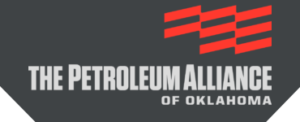Roan’s Maranto Speaks To OIPA-OKOGA Crowd
[av_post_meta av_uid=’av-8xupd’]
After more than 35 years working in the oilfield, Tony Maranto found himself in an ideal position in 2017 when he took the helm of Roan Resources, a private pure-play company focused on the accelerated horizontal development of Oklahoma’s prolific Merge/SCOOP/STACK play.
“This has been the most fun I’ve had in my career,” Maranto said, “because we got to start a company from scratch from a people standpoint, but with an existing set of assets that I personally have been studying for quite a while.
“We were able to start from the ground up, but we had a great platform to start with,” he said of Roan, an Oklahoma City-based company formed in August 2017 from the holdings of LINN Energy and Citizen Energy II.
Maranto, Roan’s president & CEO, was the featured speaker at the OIPA-OKOGA Wildcatter Wednesday Luncheon on March 6 in Oklahoma City.
He previously served in leadership roles at EOG Resources, Continental Resources and EnerVest Operating Company.
Roan hired 10 people before a payroll system was in place, and 40 people before the company had medical insurance. Roan now has more than 180 employees.
The company went public in October of 2018 and had their first earnings call in November the week when oil prices fell from $72 to about $48, he said.
Roan’s footprint primarily in the Merge is “one of the crown jewels of the eastern rim of the Anadarko Basin,” Maranto said, because it is in the crude window, is overpressured and has rock properties that can deliver attractive well site economics.
“Crude is still the revenue driver,” he said. “There’s still a huge disparity between what you get for an equivalent BOE of crude and what you get for natural gas or natural gas liquids.”
Reservoir pressure is key for moving crude through a reservoir, he said, and that’s one of the key attributes of the Merge that drove Roan there.
Being able to put together contiguous acreage was also important to Roan, he said. The company’s 245 operated sections are made up of 90 two-mile units and 65 one-mile units.
“Like everybody else, we cuss and discuss well spacing on a daily basis,” he said. “… That’s an economic decision. What’s the best way to deploy your capital? How many wells should that be? At the end of the day, whether they become five wells in a unit or 50 wells in a unit, it doesn’t matter. Your inventory is how many units you have and how many locations you can put in the ground to be the most cost-efficient.”
Maranto said there will still be ups and downs coming in the industry. “They’re going to be sharper than you think, they’re going to be bigger than you think, so you have to maintain flexibility.”
That’s why Roan doesn’t get into volume commitments, long-term rig contracts or huge dedications of any kind.
“We do that so we can be more nimble, whether we want to add rigs or, like we had to do in January, take rigs out of the system.”
Maranto said the market wants what it always wants — a company that grows but returns cash to its investors, that makes more money than it spends.
“The oil business we grew up in was always about the next well that would take us to a higher level,” he said. “That’s just not the way it is now. We now think in terms of margins that are much smaller. We think more in terms of processes than we do spudding the next well.
“As we think through what investors want, it’s trying to form this industry into something that looks like the other industries that are out there.”
He said oil and gas companies could no longer market their stock against similar companies, but rather against other industries.
“That’s who you’re being compared to in the investment community.”
He said there are headwinds against the industry, both in the stock market and politically.
“There’s a headwind right now against the state of Oklahoma. Basin results have not been as strong as the Eagle Ford or the Bakken or the Delaware Basin. There are some geologic reasons for that, but some of it may be self-inflicted as well.”
How smaller companies deal with the bias against them because of the volatility of the industry will be interesting to look at over the next 12-24 months, he said.
Roan is a single-basin company exclusively focused on work in Oklahoma’s Merge. The gross production tax hikes of early 2018 would have made a dual-basin company allocate capital differently, he said.
“This is a dog-eat-dog world,” he said. “Capital allocation is a bear, and it’s the little things that make the difference.”







